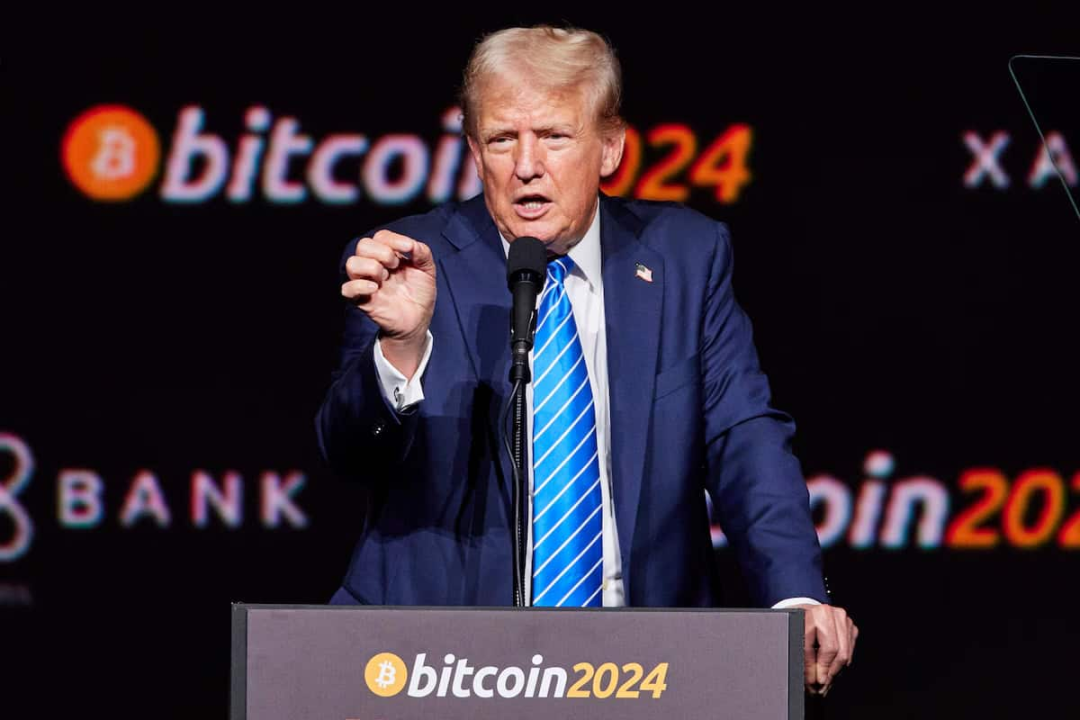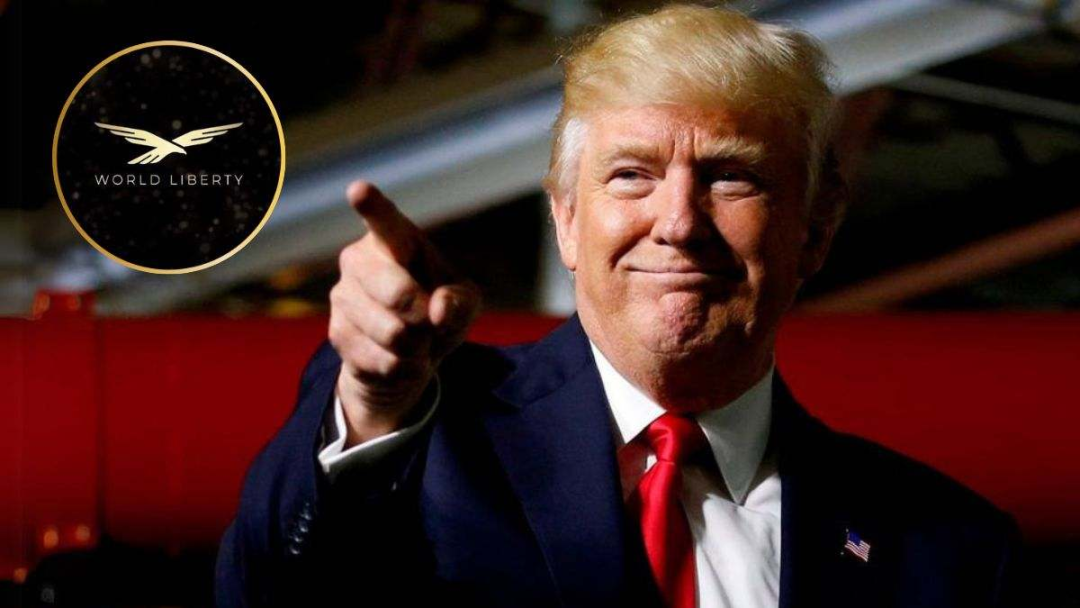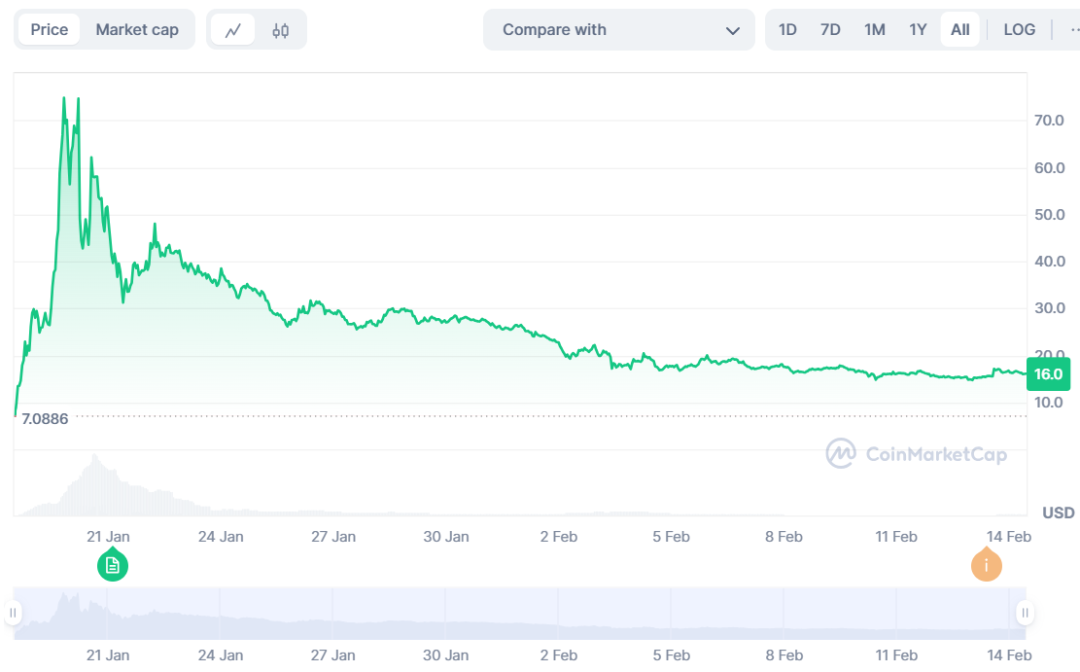The current performance of the crypto market is lower than expected and does not seem to have any long-term impact on Trump’s series of Bitcoin/crypto policies Price in. Are these really underestimated?
author| huohuo
produced| Vernacular blockchain
From the end of last year to the beginning of this year, the newly elected President of the United States Trump made many commitments to Bitcoin and the crypto industry during the election and before his inauguration, which directly boosted wave after wave of craze in the crypto market. Although Trump did not “break bridges” after taking office like some comments, he constructively implemented the various previously promised favorable crypto policies. However, his family’s Memecoin roller coaster market such as TRUMP and other complex environments were superimposed. Market sentiment immediately turned from fanaticism to panic, causing a lot of controversy.
The current performance of the crypto market is lower than expected and does not seem to have any long-term impact on Trump’s series of Bitcoin/crypto policies Price in. Are these really underestimated?
01. Implementation of Trump’s top ten encryption policy commitments
During his presidential campaign in 2024, Trump put forward ten major cryptocurrency policy commitments, clearly stating that he wanted to promote the development of the U.S. crypto industry and develop a friendly regulatory framework for it.

However, Trump did not mention crypto in his inaugural speech on January 20. However, David Bailey, CEO of Bitcoin Magazine, later issued a document stating that executive orders related to Bitcoin and cryptocurrencies have been included in Trump’s first 200 after taking office. Executive orders indicate that crypto policies will still be promoted.
As time goes by, Trump has been in office for almost a month. How is the implementation of these ten major policies?
1) Build the United States into the global cryptocurrency capital
On January 23, 2025, Trump signed an executive order aimed at promoting U.S. leadership in the field of cryptoassets and financial technology, emphasizing support for the development of blockchain and cryptoassets. David Sacks, appointed by Trump as Commissioner for Artificial Intelligence and Cryptocurrency, made it clear: “We want the United States to become the world capital of artificial intelligence and bring considerable economic benefits to the country.”
2) Stop suppressing the encryption industry within one hour of taking office
On January 23, Trump signed an executive order stating that he would establish a cryptocurrency working group with the aim of proposing a new regulatory framework for cryptoassets and exploring the creation of a national reserve of bitcoin.
3) Prevent the U.S. government from further developing Central Bank Digital Currency (CBDC)
The January 23 executive order explicitly prohibits the establishment, distribution or promotion of CBDCs in the United States and requires the immediate termination of any related programs.
4) Establish strategic Bitcoin reserves
Currently, the government is evaluating the possibility of establishing a reserve of crypto assets, but has not yet made a final decision. However, on January 23, Senator Cynthia Lummis, who introduced the Bitcoin Act, was appointed chairman of the Senate Banking Cryptoassets Subcommittee and should push the bill again.
5) Firing Gary Gensler, Chairman of the Securities and Exchange Commission
On January 20, Gary Gensler had resigned, and on January 21, Trump announced that Mark T. Uyeda will serve as acting chairman until Paul Atkins, Trump’s official nominee to replace Gensler, completes the Senate confirmation process. On the same day, Mark announced the establishment of a cryptocurrency working group to develop a clear and clear regulatory framework for U.S. cryptoassets.
In addition, according to news on February 4, the Trump administration is reducing the number of members of the SEC’s cryptocurrency enforcement team, which was once responsible for encryption enforcement operations and was composed of more than 50 lawyers and staff members. However, there is no exact information on the number of layoffs.
6) Prevent the United States from selling its Bitcoin holdings
There is currently no official statement clarifying the U.S. government’s holding of Bitcoin, so it remains to be seen if there is any new news in the future.
7) Suggestion using cryptocurrency to solve the U.S. debt problem
There is currently no public information showing that the government has taken specific measures to use crypto assets to resolve national debt.
8) Propose a comprehensive encryption policy
There is currently no comprehensive crypto policy in place. The crypto group established by the new executive order signed as mentioned below has instructed relevant agencies to submit regulatory and legislative recommendations on crypto assets within 180 days to formulate a comprehensive crypto policy.
9) Establish a cryptocurrency advisory committee
A working group composed of high-level officials from multiple departments has been established to propose a regulatory framework for crypto assets.
10) Reduce the sentence of Silk Road founder Ross Ulbricht
On January 23, Trump signed a pardon order and released Ross Ulbricht, who served 11 years in prison.
As of now, most of the ten crypto-friendly policies promised by Trump have been implemented, especially in the formulation of regulatory frameworks and policy support. However, it will take time to verify some policies to be fully realized.
02. Trump’s other encryption developments
However, in addition to the parts involving encryption in the first 200 executive orders after taking office and the previously promised encryption policies, Trump also made many other explorations about encryption before and after his term.
1) Support the launch of DeFi platform World Liberty Financial
World Liberty Financial (WLFI) is a decentralized finance (DeFi) project supported by the Trump family that was launched in September 2024 and provides blockchain financial services such as borrowing, transactions and revenue. Although Trump and his children actively promote it, WLFI is not legally directly related to the Trump family and is only authorized to use its brand for promotion. This ambiguous relationship has aroused market doubts, and Token WLFI only has governance functions and no economic rights, and the initial Token sales are flat.

However, with the inauguration of Trump and the spread of the TRUMP Memecoin effect, WLFI’s market popularity has increased. After January 20, 20%(20 billion) of its Token sales were completed, raising a total of US$1 billion. Driven by market demand, WLFI sold an additional 5%(5 billion) Tokens, priced at US$0.05, an increase from the initial price. As of February 12, 81% had been sold.
WLFI not only relies on the Trump brand, but its team also includes encryption industry veterans and has established cooperation with Aave, Ethena Labs and other institutions. Its multi-signature address currently holds more than US$74.5 million in crypto assets, mainly investing in ETH, WBTC, AAVE, etc.
2) Release TRUMP Memecoin
On January 17, three days before the president was sworn in, Trump launched “TRUMP Memecoin” in Solana. In just two days, the market value soared to US$14.5 billion and drove Bitcoin to exceed US$109,000. However, the craze quickly subsided, and by January 30, the market value fell by two-thirds, but transaction fees were as high as US$86 million to US$100 million. Trump’s wife Melania subsequently launched “MELANIA Memecoin”, which also suffered a sharp decline. TRUMP fell 64.7% in a week, and MELANIA fell more than 80%.

Price trend of TRUMP Memecoin since launch, source: CoinmarketCap
TRUMP is dominated by Trump’s CIC Digital and mainly makes profits through transaction fees. The specific benefits and ownership remain opaque. On-line data analysis shows that TRUMP was originally launched on DEX Meteora. Among the early holders of the Memecoin, at least 50 large investors each made profits of more than 10 million US dollars, while about 200,000 small investors suffered losses.
It is worth noting that the issuance of TRUMP has caused a “blood-sucking effect” in the market in the short term, draining liquidity and causing a general decline in cryptocurrencies outside the Solana ecosystem. Subsequently, the WLFI project supported by Trump began to buy ETH assets in batches.
3) Establish a cryptocurrency working group
On January 23, 2025, the executive order signed by Trump established a new special project-the Cryptocurrency Working Group, which aims to propose new regulations on the supervision of cryptocurrencies and explore the possibility of establishing a national cryptocurrency reserve. The working group is led by David Sacks, the artificial intelligence and cryptocurrency commissioner appointed by Trump, and includes senior government officials such as the Treasury Secretary, Attorney General, Commerce Secretary, SEC Chairman and CFTC Chairman.
According to the executive order, the working group will submit a report within 180 days, proposing regulatory recommendations on stablecoin management, market structure, consumer protection, etc., and evaluating the feasibility of establishing a national crypto asset reserve. “We want the United States to become the world capital of artificial intelligence and bring considerable economic benefits to the country,” Sacks said.

The move focuses on the integration of artificial intelligence and crypto assets, something Trump did not mention in his election promise. At present, Trump proposes to let the United States occupy a global leadership position in these key technology areas, trying to further promote the United States ‘dominant position in global technology competition through the coordinated development of artificial intelligence and cryptographic assets.
03. What do encryption KOL think?
KOL’s views on Trump’s encryption policy show diversity and complexity. Based on some discussions and analysis on the Internet, the following is a summary and classification of some of the main opinions:
1) Optimistic
Some KOLs believe that Trump’s policies will have a positive impact on the cryptocurrency industry. They pointed out that Trump’s executive order may mark a shift from regulatory suppression to policy support, such as stopping the SEC’s crackdown on cryptocurrencies, making the government more receptive to crypto technology, and participating entrepreneurs in policy making, which are believed to bring more innovation opportunities and regulatory clarity to the industry.
For example, Marc Andreessen, co-founder of a16z, said Trump’s policies are good for the cryptocurrency industry. In various interviews and public discussions, he expressed confidence in the regulatory easing and policy support that the Trump administration might bring.
Crypto analyst @skydegencall said Trump not only did not stop supporting cryptocurrencies after the election, but instead included Ethereum in his economic plan, believing that this would change the rules of the game and that crypto assets would become part of Trump’s legacy.
Solana community leader @sol_jingou believes that Trump’s executive order will trigger a series of chain reactions, including stopping the SEC’s crackdown on cryptocurrencies, allowing government agencies to accept cryptocurrency, allowing entrepreneurs to participate in policy formulation, and the government itself to become a participant in the crypto market, believing that the winners this time will not be short-term speculators.
Cryptography expert@0xCheshire also mentioned that Trump’s executive order will lead the SEC to relax its suppression of cryptocurrencies and the government’s acceptance of cryptotechnology. He also pointed out that this policy change is very beneficial to the industry, believing that the transition from high-pressure supervision to comprehensive support is a 180-degree U-turn.
2) Skeptics and critics
There are also KOLs who are skeptical about these policies. They worry that Trump’s policies may be more motivated by political or personal interests than a true understanding and support of encryption technology. In particular, in discussions about Trump’s own release of cryptocurrencies such as TRUMP, there are views questioning whether this will lead to market manipulation or conflicts of interest.
For example, Brian Armstrong, CEO of Coinbase, said he welcomed the regulatory easing that Trump’s policies might bring, but expressed concerns about whether the policies could truly serve the industry, avoid conflicts of interest, and provide long-term stability. He has repeatedly emphasized in public that any policy must truly understand and support the basic principles of cryptocurrency, such as decentralization and user privacy.
In an article published in the Guardian,@LarisaYarovaya, associate professor of finance, was critical of Trump’s crypto policies, arguing that Trump’s policies may leave investors unprotected and vulnerable to financial manipulation, misconduct and bubble bursting.
In an interview with NPR, Bloomberg investigative reporter @ZekeFaux expressed concerns about Trump and his family’s entry into the crypto space, especially regarding potential conflicts of interest caused by Trump’s launch of his own cryptocurrency.
U.S. Senator @ElizabethWarren expressed concern about Trump’s encryption policies, emphasizing that such policies may be for personal interests rather than public interests.
Overall, the views of KOL reflect the dual nature of expectations and concerns about Trump’s encryption policy. Most of them acknowledge that policy changes may bring opportunities, but at the same time, there are also many voices reminding the need to carefully observe the actual implementation and impact of policies.

04. Summary
On the one hand, many of the ten crypto policy commitments proposed by Trump have already begun to be implemented, such as establishing a cryptocurrency working group, stopping suppression of the crypto industry, and exploring the establishment of Bitcoin reserves. However, some commitments have not yet been fully realized, such as solving national debt problems through cryptocurrencies and launching a comprehensive crypto policy.
On the other hand, Trump’s active participation in the field of encryption is not limited to policy support, but also includes actual business operations. He established a cryptocurrency working group, released TRUMP coins, and supported projects such as the decentralized finance (DeFi) platform World Liberty Financial. This shows that Trump’s participation in cryptocurrencies is not just rhetoric. He promotes market innovation through specific projects and policies and strives to establish his influence in the cryptocurrency field.
In addition, these measures also reflect Trump’s desire to enhance the United States ‘leadership position in the global crypto market and financial technology through the potential of cryptocurrencies and related technologies. Whether through his own cryptocurrency or supporting decentralized financial platforms, he is bringing more policy support and market opportunities to the cryptocurrency industry. However, the actions have also raised questions from the market about its potential conflicts of interest and transparency, particularly the role of Trump and his family in the crypto project, drawing some criticism.



